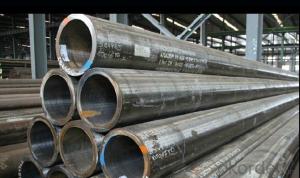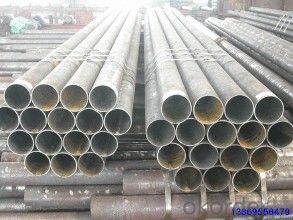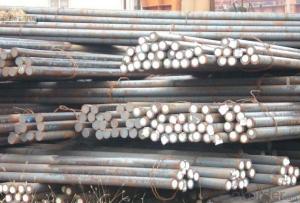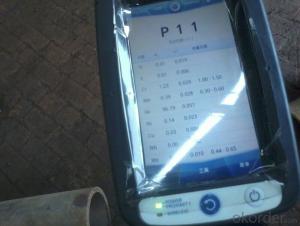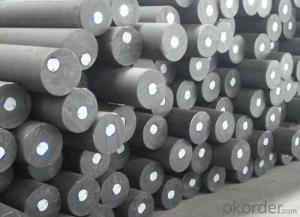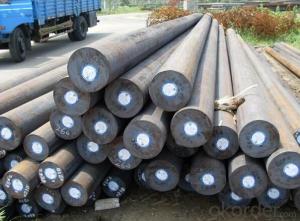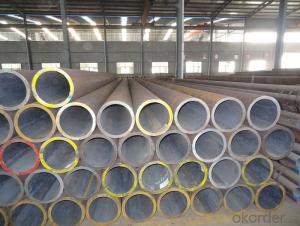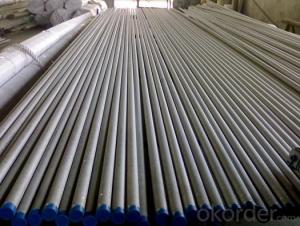ASTM A335 P91 High Alloy Steel Tube
- Loading Port:
- China Main Port
- Payment Terms:
- TT or LC
- Min Order Qty:
- 25-35 m.t.
- Supply Capability:
- -
OKorder Service Pledge
OKorder Financial Service
You Might Also Like
Quick Details
| Thickness: | 1.5 - 70 mm | Section Shape: | Round | Outer Diameter: | 0.125 - 20 inch |
| Place of Origin: | Shandong China (Mainland) | Secondary Or Not: | Non-secondary | Application: | Hydraulic Pipe |
| Technique: | Hot Rolled | Certification: | SGS/BV/IBS | Surface Treatment: | Oiled |
| Special Pipe: | Thick Wall Pipe | Alloy Or Not: | Is Alloy | Length: | Random length or fixed length |
| Grade: | 10#,20#,15CrMo,12Cr1MoV,12CrMo,16Mn,A179-C,A213,A210,A335 P12,A178-C,A199,St35.8,St37-2,Q235,10#-45#,Cr-Mo alloy,A53-A369,ST35-ST52,Q195-Q345 | Standard: | JIS G3445-2006,JIS G3446-2004,GB/T 8163-1999,GB/T 8162-1999,GB 5130,DIN 1629/3,DIN 2391,DIN 17175,DIN 2448,ASTM A106-2006,ASTM A213-2001,ASTM A53-2007,ASTM A210-1996,ASTM A335-2006,ASTM A179-1990,JIS,GB,DIN,ASTM |
Packaging & Delivery
| Packaging Detail: | Standard seaworthy packing,or as per customer's request. |
| Delivery Detail: | In 7-30days |
Specifications
high temperature A335 P91 alloy steel tube:
1. MOQ:10MT
2. OD:1/8"-20"
3. Standard:ASTM,DIN,JIS,GB
4. Fast delivey
high temperature seamless A335 P91 alloy steel tube:
Standard | ASTM, BS, JIS, DIN |
Steel Grade | ASTM A210-C,A333,A334,A335,P11,P5,P9,P91,A209 T1,SAE4130/JIS G3455,G3464,G3460,G3462,G3458/DIN st52,st35N/ BS3059.3T53,GB 16Mn,12CrMo,35CrMo |
O.D. | 1/8"-20" |
W.T. | SCH10-XXS |
Length | 5m-12m |
Outside Coating | Black painting, anti-corrosion oil, galvanized or as per required by customers |
Packing | Wrapped in bundles by steel strips/bulk |
Carbon steel seamless pipe price | USD950-USD1800/Ton |
Third party inspection | SGS/BV |
Production Capacity | 400,000tons per year |
Delivery time | 20 days |
Main market | Asia, India, Middle East, America, Europe |
High Alloy Steel Tube Image
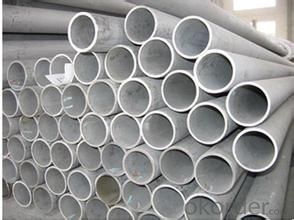
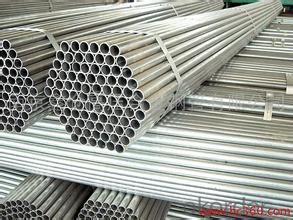
FAQ of High Alloy Steel Tube
①How is the quality of your products?
Our products are manufactured strictly according to national and internaional standard, and we take a test
on every pipe before delivered out. If you want see our quality certifications and all kinds of testing report, please just ask us for it.
Guaranteed: If products’ quality don’t accord to discription as we give or the promise before you place order, we promise 100% refund.
②How about price?
Yes, we are factory and be able to give you lowest price below market one, and we have a policy that “ for saving time and absolutely honest business attitude, we quote as lowest as possible for any customer, and discount can be given according to quantity”,if you like bargain and factory price is not low enough as you think, just don’t waste your time.Please trust the quotation we would give you, it is professional one.
③Why should you chose us?
Chose happens because of quality, then price, We can give you both.Additionally, we can also offer professional products inquiry, products knowledge train(for agents), smooth goods delivery, exellent customer solution proposals.Our service formula: good quality+good price+good service=customer’s trust
SGS test is available, customer inspection before shipping is welcome, third party inspection is no problem.
Any question, pls feel free to contact us !
- Q: What is the maximum allowable deflection for steel pipes?
- Industry standards and design codes typically determine the maximum allowable deflection for steel pipes. These regulations specify the acceptable limits of deflection to guarantee the pipes' structural integrity and functionality. The maximum allowable deflection can vary, depending on factors like pipe diameter, wall thickness, material properties, and the application type. To determine the specific maximum allowable deflection for a particular steel pipe application, it is crucial to reference relevant standards and codes such as the ASME B31.3 code for process piping or AWWA standards for water transmission and distribution pipes. Adhering to these guidelines ensures the safe and efficient operation of steel pipes in various industries and applications.
- Q: Can steel pipes be coated for additional protection?
- Yes, steel pipes can be coated for additional protection. Coatings such as epoxy, polyethylene, or zinc can be applied to steel pipes to enhance their durability, corrosion resistance, and longevity.
- Q: How are steel pipes used in the manufacturing of furniture and appliances?
- Due to their strength, durability, and versatility, steel pipes find widespread use in the production of furniture and appliances. In furniture manufacturing, they are commonly employed to construct the frames and structures of various pieces, including chairs, tables, and beds. Serving as the primary support system, these pipes ensure a sturdy and dependable foundation for the furniture. In appliances, steel pipes serve multiple purposes. They are frequently utilized to create the internal framework and bear the weight of kitchen appliances such as stoves, ovens, and refrigerators. Additionally, steel pipes are commonly found in washing machines, dryers, and dishwashers, facilitating the transportation of water and other fluids throughout the appliance. Moreover, steel pipes are essential in the manufacture of outdoor furniture and equipment that require weather resistance and durability. To safeguard against rust and corrosion, these pipes are often coated with protective materials, thus ensuring the longevity of the furniture and appliances. In conclusion, steel pipes play a vital role in the production of furniture and appliances, providing the necessary strength and support. Their versatility allows for various applications, making them an indispensable component in the manufacturing process of these goods.
- Q: How do steel pipes handle pressure surges?
- Steel pipes are designed to handle pressure surges effectively due to their inherent strength and durability. The high tensile strength of steel allows it to withstand significant pressure fluctuations without deforming or bursting. Additionally, the seamless construction of steel pipes ensures a smooth and continuous flow, minimizing the impact of pressure surges. Furthermore, steel pipes can be reinforced with additional support structures, such as braces or anchors, to further enhance their ability to handle pressure surges.
- Q: Difference and application of seamless hot rolled pipe and cold drawn pipe in seamless steel tube
- purpose2.1 seamless tubes are widely used. General purpose seamless tubes are rolled from plain carbon structural steel, low-alloy structural steel or alloy structural steel, with the most output and are used primarily as pipes or structural parts for conveying fluids2.2, divided into three kinds according to the supply of different uses: the supply of a, according to the chemical composition and mechanical properties; the supply of B, according to the mechanical properties; the supply of C, according to the hydraulic pressure test. According to a, the B class steel supply, such as for under fluid pressure, but also to the pressure test.2.3. Seamless tubes for special purposes include seamless tubes for boilers, seamless tubes for geology, and seamless pipes for petroleum use
- Q: How are steel pipes classified based on pressure ratings?
- Steel pipes are classified based on pressure ratings into various categories such as Schedule 40, Schedule 80, and Schedule 160, with each schedule indicating the maximum pressure the pipe can withstand.
- Q: How can galvanized steel pipe be connected with stainless steel pipe?
- Welding methods are used to connect. Because galvanized pipe is in fact carbon steel pipe, so galvanized pipe and stainless steel pipe welding, in fact, carbon steel and stainless steel welding, welding of dissimilar materials.
- Q: Can steel pipes be used in marine environments?
- Yes, steel pipes can be used in marine environments. Steel is a durable and strong material that can withstand the harsh conditions of the marine environment, including exposure to saltwater, waves, and corrosion. However, it is important to select the correct type of steel and apply suitable protective measures to prevent corrosion. Stainless steel and corrosion-resistant alloys are commonly used in marine applications as they have a high resistance to corrosion and can handle the constant exposure to saltwater. Additionally, coatings such as epoxy or zinc can be applied to further protect steel pipes from corrosion. Regular maintenance and inspections are also crucial to ensure the longevity and performance of steel pipes in marine environments.
- Q: What are the safety considerations while handling steel pipes?
- When handling steel pipes, some key safety considerations include wearing appropriate personal protective equipment (PPE) such as gloves, safety glasses, and steel-toe boots to protect against potential injuries. It is important to be cautious of the weight and size of the pipes, using proper lifting techniques and equipment to prevent strains or accidents. Additionally, workers should be mindful of the sharp edges and potential for cuts or punctures, ensuring they have a clear and organized workspace to minimize the risk of tripping or falling. Regular inspections of the pipes for any damages or defects are also crucial to prevent accidents and maintain a safe working environment.
- Q: What are the different pipe fittings used with steel pipes?
- Some of the different pipe fittings used with steel pipes include elbows, tees, couplings, unions, reducers, flanges, and caps.
Send your message to us
ASTM A335 P91 High Alloy Steel Tube
- Loading Port:
- China Main Port
- Payment Terms:
- TT or LC
- Min Order Qty:
- 25-35 m.t.
- Supply Capability:
- -
OKorder Service Pledge
OKorder Financial Service
Similar products
Hot products
Hot Searches
Related keywords
